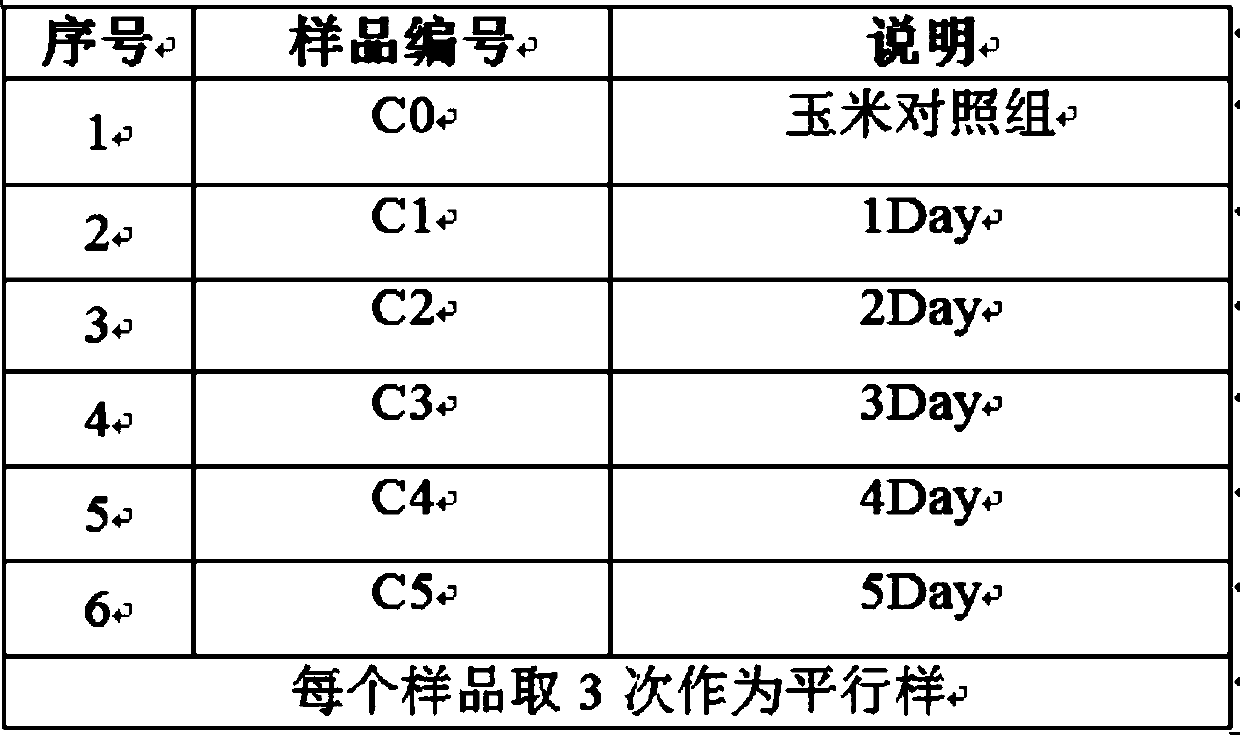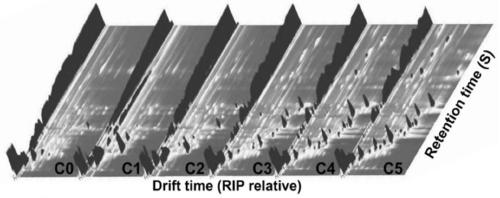Specific molecular markers for aspergillus flavus infection mildew of corns, peanuts and walnuts and method for carrying out early mildew detection by utilizing specific molecular markers
A technology of molecular markers and Aspergillus flavus, which is applied in the direction of measuring devices, material separation, and analysis of materials, can solve problems such as health damage to eaters, no practical significance, and economic losses.
- Summary
- Abstract
- Description
- Claims
- Application Information
AI Technical Summary
Problems solved by technology
Method used
Image
Examples
Embodiment 1
[0059] A specific molecular marker for infection and mildew of Aspergillus flavus in corn, which includes: ethyl acetate-D, 3-hydroxybutane-2-one-D;
[0060] A method for early mildew detection using the specific molecular markers of the Aspergillus flavus infecting mildew, comprising the following steps:
[0061] S1. Establish a comparison sample database: select three parallel samples of corn that were not infected by Aspergillus flavus as comparison samples, and take pictures to retain the morphology of the comparison samples; use GC-IMS technology to detect the comparison samples and obtain comparisons Sample GC-IMS data, the comparative sample GC-IMS data includes the type and content of volatile substances in the comparative sample; based on the obtained comparative sample GC-IMS data, a corresponding comparative sample GC-IMS database is established;
[0062] S2. Establish a mildew sample database: randomly extract three parallel samples of the 24-hour sample, 48-hour s...
Embodiment 2
[0076] A specific molecular marker for mildew caused by Aspergillus flavus in peanuts, including: hexanoic acid, 2.3-butanedione, 2-hexan-1-ol-M, pentane-1-ol-M, hexanal;
[0077] The method for early mildew detection by utilizing the specific molecular markers of the peanut flavus infecting mildew, comprising the following steps:
[0078] S1. Establish a comparison sample database: select three parallel samples of peanuts that were not infected by Aspergillus flavus as comparison samples, and take pictures to retain the morphology of the comparison samples; use GC-IMS technology to detect the comparison samples and obtain comparisons Sample GC-IMS data, the comparative sample GC-IMS data includes the type and content of volatile substances in the comparative sample; based on the obtained comparative sample GC-IMS data, a corresponding comparative sample GC-IMS database is established;
[0079] S2. Establish a database of mildew samples: Randomly extract three copies of the 24...
Embodiment 3
[0093] A specific molecular marker for Aspergillus flavus infection and mildew of walnut, which includes: ethyl acetate-D, 3-methyl-2-butanol, cyclohexanone;
[0094] Utilize the specific molecular marker of described walnut flavus to infect mildew to carry out the method for early mildew detection, comprise the following steps:
[0095] S1. Establish a comparison sample database: select three parallel samples of walnuts that were not infected and mildewed by Aspergillus flavus as comparison samples, and take pictures to retain the morphology of the comparison samples; use GC-IMS technology to detect the comparison samples and obtain comparisons Sample GC-IMS data, the comparative sample GC-IMS data includes the type and content of volatile substances in the comparative sample; based on the obtained comparative sample GC-IMS data, a corresponding comparative sample GC-IMS database is established;
[0096] S2. Establish a mildew sample database: Randomly extract three samples o...
PUM
 Login to View More
Login to View More Abstract
Description
Claims
Application Information
 Login to View More
Login to View More - R&D Engineer
- R&D Manager
- IP Professional
- Industry Leading Data Capabilities
- Powerful AI technology
- Patent DNA Extraction
Browse by: Latest US Patents, China's latest patents, Technical Efficacy Thesaurus, Application Domain, Technology Topic, Popular Technical Reports.
© 2024 PatSnap. All rights reserved.Legal|Privacy policy|Modern Slavery Act Transparency Statement|Sitemap|About US| Contact US: help@patsnap.com










